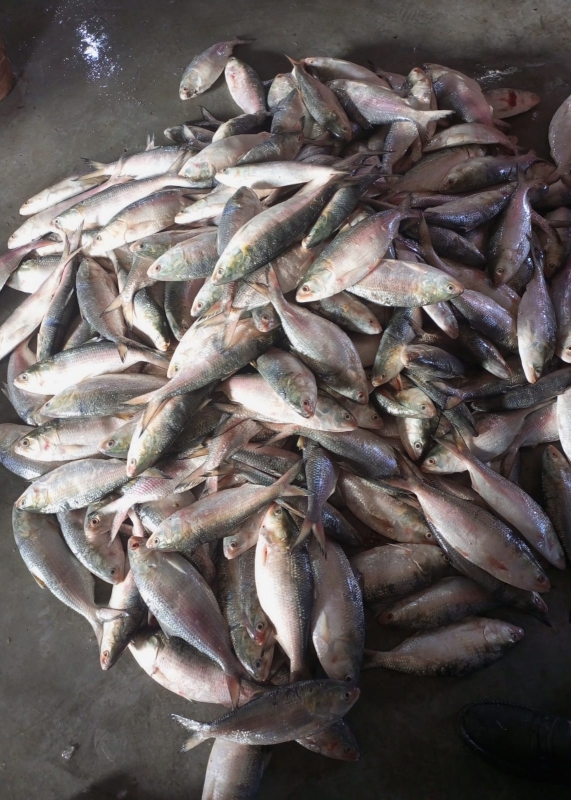- CA Yunus pays homage to Liberation War martyrs on Victory Day |
- Bangladesh capital market extends losing streak for second day |
- Bangladesh celebrates Victory Day Tuesday |
- 'Different govts presented history based on their own ideologies': JU VC |
Hilsa aplenty in Barguna but prices surging

Hilda aplenty in Barguna.
By Golam Mostofa Kader
Barguna, Jun 16 - Just two days after the 58-day fishing ban ended, the fishermen of Barguna are beaming with joy as their nets come in heavy with shimmering hilsa.
The once-quiet fish landing centre in Patharghata has turned into a bustling hub of activity, alive with the vibrant sounds and sights of a thriving seafood market.
Since the ban was lifted, the Barguna coast has seen a flurry of movement—baskets brimming with hilsa and other marine fish, traders and labourers working energetically and fishing communities filled with renewed hope.
According to the Patharghata fish landing centre, a total of 20,817 kilograms of fish were brought ashore on the second day of the season.
This included 9,305 kilograms of hilsa, with the remaining 11,512 kilograms comprising other marine species—signalling a healthy resurgence of aquatic resources in the Bay of Bengal.
Hilsa prices have shot up sharply. A one-kilogram hilsa is fetching as much as Tk1 lakh per maund.
Fish weighing 900 grams are selling for Tk89,000–90,000, 600–700g fish are going for Tk60,000–64,000, while the 500g variety is priced at Tk42,000–46,000 per maund. Such high prices are rarely seen in recent years.
While the large size of hilsa has drawn strong interest from wholesalers and buyers, fishermen report that soaring costs are eating into their profits.
The rising prices of diesel, ice and labour have left many struggling to break even. The acute shortage of ice is a particular concern, as it affects the quality of the catch.
With the sudden influx of fish, existing storage and transport facilities are falling short. This has led to spoilage and price drops in some markets, deepening losses for many fishers.
Biplob Kumar Sarker, an official at the Patharghata fish landing centre, said the catch volume indicates that the sea is once again abundant with fish.
He called for urgent improvements in preservation, market connectivity, and transport systems to reduce waste.
Barguna District Fisheries Officer Mohsin said this year’s joint conservation effort with India during the ban has yielded results, as seen in the rising hilsa numbers.
To sustain this success, he stressed the importance of long-term planning, easier access to ice, fuel, and fishing supplies and introducing effective price control mechanisms to keep hilsa within the reach of consumers.
Despite stronger catches in recent years, Hilsa remains expensive for Bangladeshi consumers due to persistent market challenges.
In FY 2022–23, Bangladesh produced 571,342 tonnes of hilsa, a slight increase from 566,593 tonnes in FY 2021–22. In FY 2023–24, production reached 5.29 lakh metric tonnes—about 11% of the country's total fish output.
Hilsa contributes over 1% to the national GDP. Bangladesh remains the world’s top hilsa producer, accounting for over 80% of global output, according to Fisheries Adviser Farida Akther.
She shared these insights during Jatka Conservation Week in April.
Hilsa, a recognized Geographical Indication (GI) product of Bangladesh, directly employs around 600,000 people in harvesting.
An additional 20 to 25 lakh people are involved in associated sectors like transportation, sales, net and boat making, ice production, processing, and exports. - UNB

